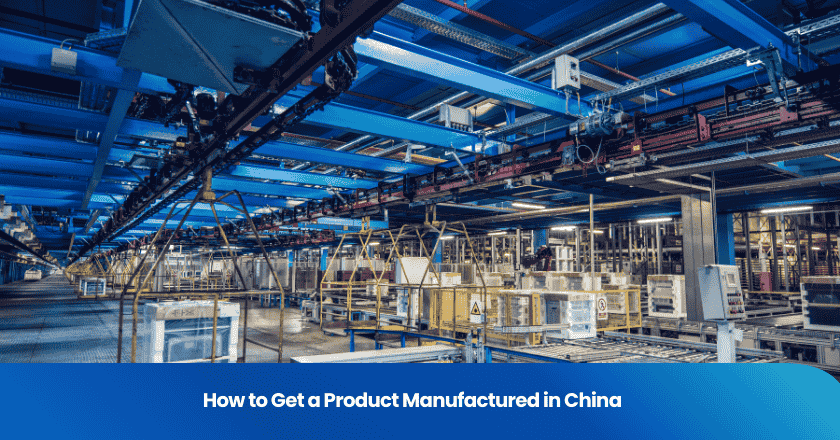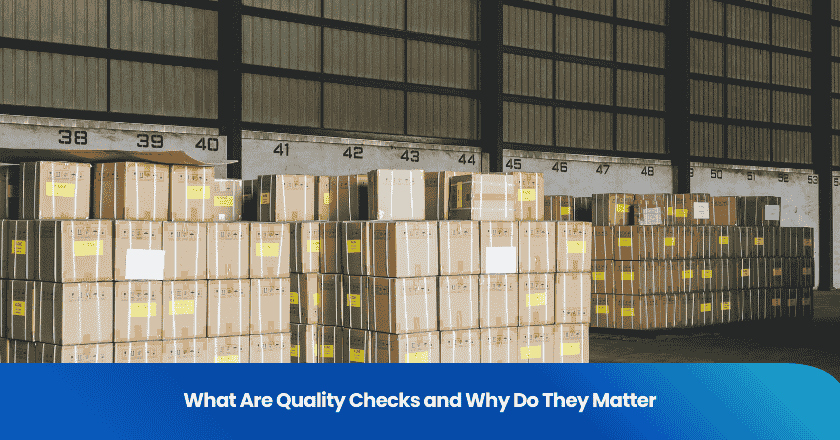
When you want to manufacture a product in China, you need to follow a clear process. Start by defining your product requirements and ensure every detail is documented. Research reliable suppliers in China to avoid costly mistakes. You must use sourcing agents if you need help to get a product manufactured in China efficiently. Protect your intellectual property at every stage. Quality control remains critical throughout the journey of how to get a product manufactured in China. If you want to succeed, focus on communication and precision in every step as you learn how to get a product manufactured in China.
Define Your Product
Product Requirements
You must start with a clear vision before you manufacture a product in China. Write down every feature your product needs. List the materials, dimensions, and functions. Manufacturers in China expect you to provide detailed requirements. If you skip this step, you risk delays and misunderstandings. Use a checklist to organize your ideas.
Tip: The more specific you are, the easier it becomes for manufacturers to deliver what you want.
Specifications
You need to translate your requirements into technical specifications. These include measurements, tolerances, colors, and finishes. Manufacturers in China rely on these details to guide their manufacturing process. Create a table to summarize your specifications for easy reference:
| Feature | Specification |
|---|---|
| Material | ABS Plastic |
| Size | 10cm x 5cm x 2cm |
| Color | Matte Black |
| Tolerance | ±0.5mm |
You should share this table with your chosen manufacturers. This step helps you avoid confusion and ensures consistency in manufacturing.
Prototypes
You need to request a sample before full-scale manufacturing begins. A sample lets you check quality and design. Manufacturers in China usually offer sample production for a fee. Review the sample carefully. Test it for durability and performance.
Note: You should ask for revisions if the sample does not meet your expectations.
You can repeat the sample process until you feel confident. This step saves you time and money during mass production. When you manufacture a product in China, a good sample sets the standard for the entire order.
Market Research in China
Cost and Quality
You need to understand the balance between cost and quality before you start manufacturing in China. Many manufacturers in China offer competitive prices, but you should not focus on price alone. Quality standards can vary widely. You must compare several suppliers to find cost-effective manufacturers in China who meet your expectations.
- Request detailed quotes from multiple manufacturers.
- Ask for samples to evaluate product quality.
- Review the supplier’s certifications and previous work.
Tip: Always check if the manufacturer can maintain consistent quality at scale. This step helps you avoid surprises during mass production.
You can often find cost-effective manufacturers in China by attending trade shows or using trusted online platforms. These methods give you access to a wide range of options and help you make informed decisions.
Domestic vs. China Manufacturing
You may wonder whether to choose domestic or China manufacturing. Domestic production can offer faster communication and easier site visits. However, manufacturing in China often provides lower costs and access to specialized skills. Many businesses choose outsourcing manufacturing to benefit from these advantages.
Consider these factors when making your decision:
| Factor | Domestic Manufacturing | China Manufacturing |
|---|---|---|
| Cost | Higher | Lower |
| Lead Time | Shorter | Longer |
| Customization | Easier | Wide Range |
| Production Scale | Limited | Large Scale |
If you want to scale your business or reduce expenses, China manufacturing can be a smart choice. You should weigh the pros and cons based on your product needs and long-term goals.
How to Find a Manufacturer in China
Find the Right Suppliers
You need to find a manufacturer who matches your product needs and business goals. Start by identifying your product category. Many manufacturers in China specialize in electronics, textiles, plastics, metal goods, and household items. You should focus on suppliers with experience in your specific category. This step helps you avoid costly mistakes and ensures you receive quality products.
To find the right suppliers, follow these steps:
1. Search for manufacturers using trusted online directories and trade platforms.
2. Attend trade shows in China to meet suppliers face-to-face.
3. Ask for referrals from industry contacts or sourcing agents.
4. Request product catalogs and company profiles from potential manufacturers.
Tip: Always check the supplier background before you commit. Look for business licenses, certifications, and export experience. Reliable manufacturers will provide this information without hesitation.
You should compare several options before you make a decision. Evaluate their production capacity, communication skills, and willingness to provide samples. This process helps you find a manufacturer who can deliver consistent quality and meet your deadlines.
Sourcing Agents
Sourcing agents play a key role when you want to find a manufacturer in China. These professionals help you navigate the local market, negotiate prices, and manage communication with manufacturers. You can use sourcing agents if you lack experience or language skills.
Here is how you can work with sourcing agents:
- Share your product specifications and requirements with the agent.
- Ask the agent to shortlist manufacturers based on your criteria.
- Request the agent to arrange factory visits or video calls.
- Let the agent handle price negotiations and sample requests.
Sourcing agents can save you time and reduce risks. They often have established relationships with manufacturers and understand the local business culture. You should choose agents with a strong track record and transparent fee structures.
Note: Make sure you sign a clear agreement with your sourcing agent. This step protects your interests and ensures accountability throughout the manufacturing process.
Online vs. Offline Sourcing
You can find a manufacturer in China through both online and offline methods. Each approach has its advantages and challenges.
Online Sourcing
You can use online platforms to source from wholesale suppliers and connect with manufacturers across China. These platforms allow you to compare prices, read reviews, and request quotes quickly. Online sourcing works well if you want to reach a large number of suppliers without traveling.
Offline Sourcing
Offline sourcing involves visiting trade shows, factories, or industrial zones in China. This method lets you inspect products firsthand and build stronger relationships with manufacturers. You can also verify the supplier’s facilities and production capabilities directly.
| Method | Pros | Cons |
|---|---|---|
| Online | Fast, convenient, wide selection | Harder to verify suppliers |
| Offline | Direct inspection, relationship building | Time-consuming, travel costs |
Tip: Combine both methods for the best results. Start your search online, then visit shortlisted manufacturers in person if possible.
No matter which method you choose, always verify the supplier’s credentials. Ask for business licenses, quality certificates, and references. You should also conduct background checks to confirm the manufacturer’s reliability. This step is essential to avoid scams and ensure a smooth outsourcing manufacturing experience.
When you find a manufacturer, communicate your requirements clearly and maintain regular contact. This approach helps you build trust and ensures your product meets your expectations.
How to Get a Product Manufactured in China: The Process
Communicate Specifications
Clear communication sets the foundation for successful manufacturing in China. You must provide detailed specifications to your chosen manufacturers. Use diagrams, technical drawings, and written descriptions. Specify materials, dimensions, tolerances, and finishes. Include packaging requirements and labeling instructions. When you communicate every detail, you reduce the risk of errors and misunderstandings.
Create a specification sheet for your product. Share this document with all potential manufacturers. Ask questions to confirm their understanding. You should also request feedback from the factory to ensure they can meet your requirements. Effective communication helps you get a product manufactured in China without costly mistakes.
Tip: Use simple language and visual aids. Many manufacturers in China work with international clients, but language barriers can still cause confusion.
Request Samples
Before you move to mass production, always request a sample. This step allows you to check the quality and accuracy of your product. When you request a sample, you can test the product’s function, appearance, and durability. You should compare the sample to your original specifications.
Follow these steps to evaluate samples:
1. Inspect the sample for defects or inconsistencies.
2. Test the product under real-world conditions.
3. Provide feedback to the manufacturer for improvements.
If the sample does not meet your standards, ask for revisions. Repeat the process until you feel confident in the manufacturer’s ability. This approach ensures you manufacture a product in China that matches your expectations.
Note: Keep a reference sample for future quality checks. This sample serves as a benchmark during mass production.
Negotiate Terms
Negotiation is a critical part of how to get a product manufactured in China. You must discuss pricing, payment terms, lead times, and minimum order quantities. Clarify every detail before you sign any agreement. You should also address shipping methods, packaging, and after-sales support.
Consider using a table to organize negotiation points:
| Term | Details to Confirm |
|---|---|
| Price | Unit cost, discounts |
| Payment Terms | Deposit, balance, payment method |
| Lead Time | Production and delivery dates |
| Minimum Order Qty | Smallest batch accepted |
| Shipping | Method, cost, incoterms |
You should make contractual supply agreement with chinese manufacturer to protect your interests. This agreement outlines all terms and reduces the risk of disputes. When you negotiate clearly, you set the stage for a smooth manufacturing process.
Protect Intellectual Property
Protecting your intellectual property is essential when you get a product manufactured in China. You should register your patents, trademarks, and copyrights in China before sharing sensitive information. Use non-disclosure agreements (NDAs) with all parties involved.
Take these steps to safeguard your ideas:
- Register your IP with Chinese authorities.
- Sign NDAs with manufacturers and sourcing agents.
- Limit the amount of confidential information you share until agreements are in place.
Alert: Intellectual property laws in China differ from those in other countries. Local registration provides stronger protection.
You should also make contractual supply agreement with chinese manufacturer that includes IP protection clauses. This step helps prevent unauthorized use or copying of your product.
Place Orders
Once you approve the sample and finalize negotiations, you can place your order. Provide a purchase order that lists all product details, quantities, and delivery dates. Confirm the payment schedule and shipping arrangements.
Monitor the production process closely. Stay in regular contact with your manufacturer. Request updates and photos during manufacturing. This approach helps you address issues early and ensures you get a product manufactured in China that meets your standards.
Tip: Keep all documents and communications organized. Good record-keeping supports smooth production and helps resolve any disputes.
By following these steps, you master how to get a product manufactured in China. You build strong relationships with manufacturers in China and achieve consistent results.
Quality Control and Shipping
Production Monitoring
You need to monitor production closely when working with manufacturers in China. Regular updates help you catch problems early. Ask for progress reports and photos from the factory. You can also carry out a factory audit before mass production begins. This step lets you check the facility, equipment, and workforce. Many manufacturers in China welcome audits because they show transparency. If you cannot visit in person, hire a local agent to monitor the process for you.
Tip: Set clear milestones for each stage of manufacturing. This approach helps you track progress and maintain quality.
Inspections
Inspections play a vital role in quality control. You should inspect the first sample from the production line. Compare it to your approved sample and specifications. If you find any issues, ask the manufacturer to fix them before continuing. Many manufacturers in China offer third-party inspection services. These inspectors check products for defects, packaging, and compliance with your requirements.
- Inspect raw materials before production starts.
- Check a random sample during production.
- Perform a final inspection before shipping.
A thorough inspection process reduces the risk of receiving faulty goods.
Shipping and Logistics
Shipping your product from China requires careful planning. You must choose the right shipping method based on cost, speed, and product type. Work with your manufacturer to prepare all necessary documents, such as invoices and packing lists. Reliable manufacturers help you arrange shipping and handle customs paperwork. You should track your shipment and confirm delivery dates.
| Shipping Method | Speed | Cost |
|---|---|---|
| Air Freight | Fast | Higher |
| Sea Freight | Slower | Lower |
Note: Always double-check shipping documents to avoid delays at customs.
Common Pitfalls
Many businesses face challenges when manufacturing in China. Common pitfalls include unclear specifications, poor communication, and skipping inspections. You should never skip the sample approval process. Always communicate your expectations clearly to manufacturers. If you ignore quality checks, you risk receiving products that do not meet your standards.
- Confirm every detail in writing.
- Approve a production sample before mass production.
- l Monitor quality at every stage.
By staying proactive, you avoid costly mistakes and ensure a smooth experience with manufacturers in China.
You now know the essential steps to get your product manufactured in China. Start with thorough research and clear product requirements. Communicate every detail to your suppliers in China. Use sourcing agents or trusted online platforms if you are new to the process. Stay diligent at each stage. Pay close attention to quality control and shipping. Your careful planning and attention to detail will help you achieve success in China’s manufacturing market.
Begin with research and planning
- Communicate clearly with suppliers
- Use sourcing agents or online platforms
- Monitor quality and shipping closely
FAQ
How long does it take to manufacture a product in China?
Production time depends on product complexity and order size. Most projects take 30 to 90 days from order confirmation to shipment. You should confirm timelines with your manufacturer before starting.
What documents do you need for shipping from China?
You need a commercial invoice, packing list, and bill of lading. Some products require export licenses or certificates. Your manufacturer or freight forwarder can help prepare these documents.
Can you visit the factory before production starts?
Yes, you can visit the factory. Factory visits help you verify capabilities and build trust. If you cannot travel, you can hire a local agent to inspect the facility for you.
How do you handle language barriers with Chinese manufacturers?
You can use clear written instructions and visual aids. Many manufacturers have English-speaking staff. Sourcing agents can also help bridge communication gaps and ensure your requirements are understood.
What payment methods do manufacturers in China accept?
Most manufacturers accept wire transfers (T/T), letters of credit (L/C), and sometimes PayPal for samples. You should confirm payment terms before placing your order and use secure methods for large transactions.
Grow your business with TradeAider Service
Click the button below to directly enter the TradeAider Service System. The simple steps from booking and payment to receiving reports are easy to operate.



